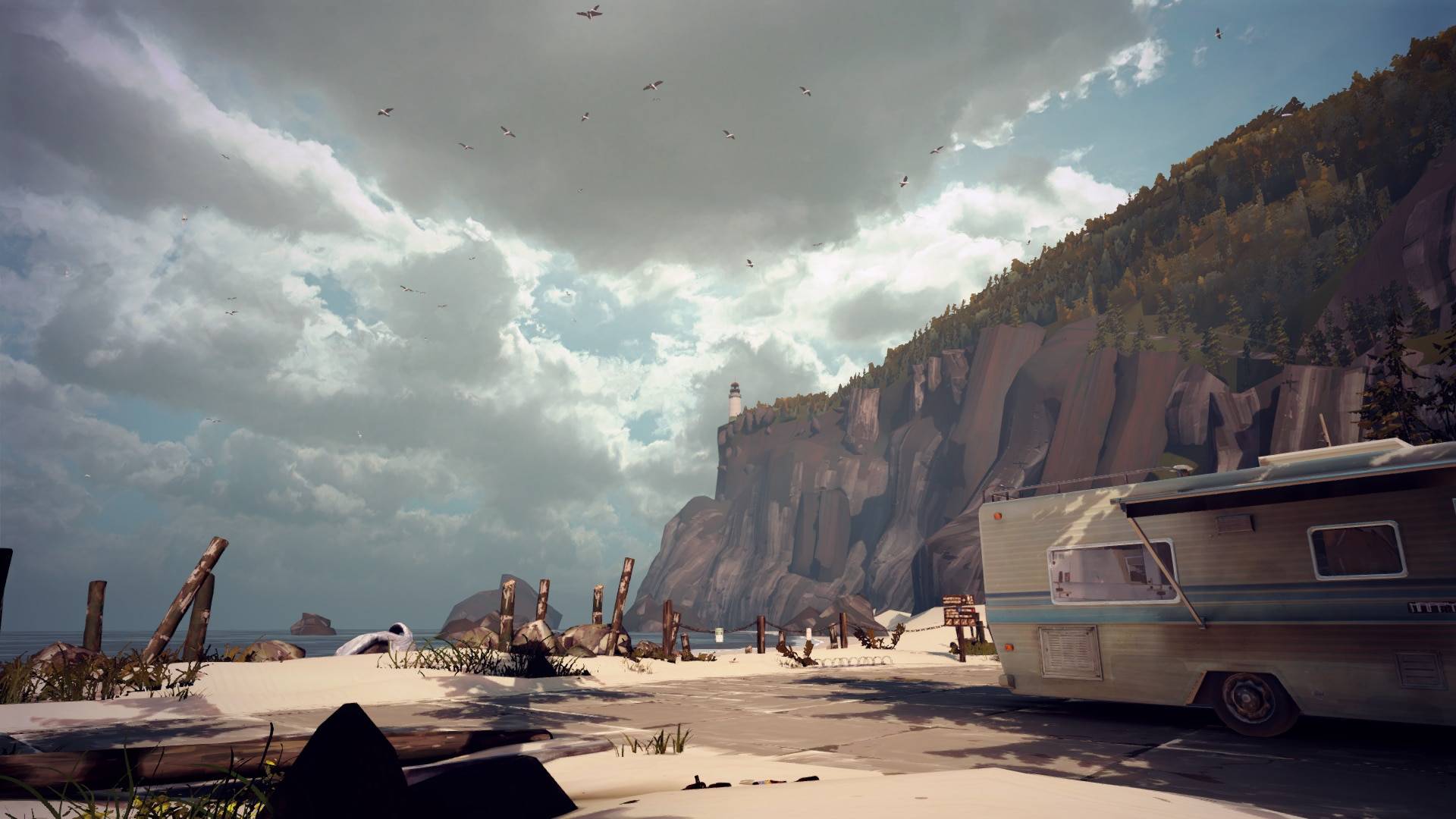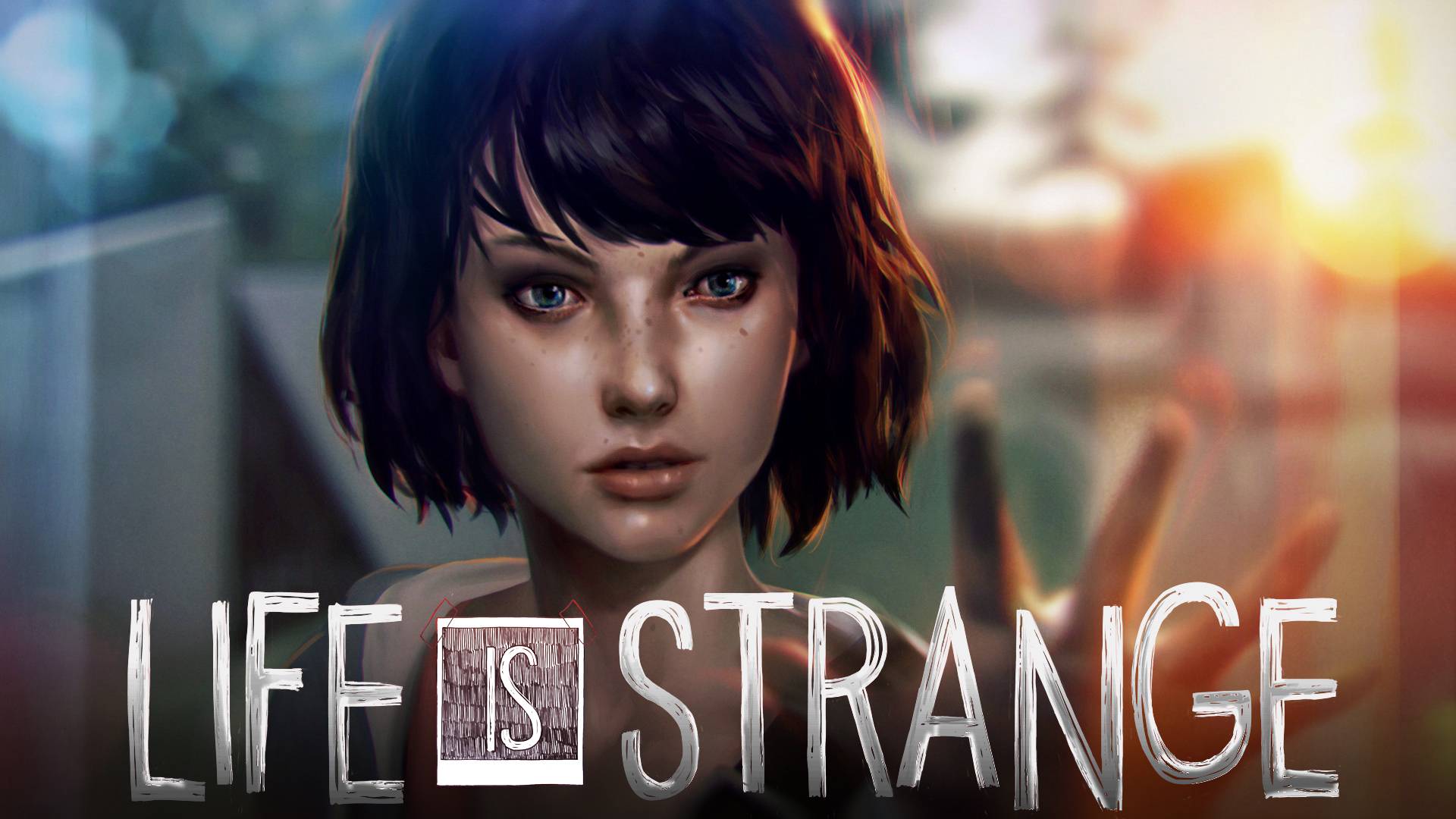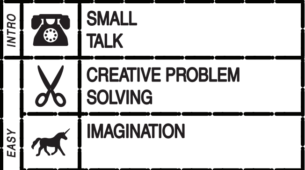I’ve heard of Life is Strange before. I sort of remember first seeing it on the App Store. I’ve heard references to it many a time, but have never played it before. It almost has a cult-like following, so I was interested in seeing what all the hype was about.
Life is Strange is a choose your adventure game developed by Dontnod Entertainment and published by Square Enix. It’s available on the Nintendo Switch, PlayStation, Xbox, PC, the Google Play Store, and the App Store.

From the outset, I can see that the game is designed to have the architecture of small, coastal town. There are sandy beaches, driftwood, a lighthouse, and a bunch of other features one would expect to find in a seaside town. The place is called Arcadia Bay, it’s a fictional town. From a designer standpoint, I think this the choice to have the setting be fictional but realistic was a good call—it allows the Life is Strange to have an empty canvas for its architecture while still drawing from reality. The setting of Arcadia Bay is, in some ways, like a character in its own right. I feel like I was traipsing around the town, going where I wanted, but still somehow the flow of the story was guided by the town. Drawing from Ernest Adams’ ideas in The Role of Architecture, Arcadia Bay is meticulously designed to lead players on a journey of discovery. It feels both vast and intimate. I felt like I had the freedom to explore, but the story weaved me in and out of these areas so as to keep up with the ever-unfolding narrative. Some of the spaces I encountered while playing—the Blackwell Academy dorm, the junkyard, and the Two Whales diner—seem like they are carefully crafted not only to create a mood, but also to control the pace and delivery of the story.

In Blackwell’s classroom, everything is set up in a strict way: There are desks and formal seating that Max feels isolated, she feels stressed. But when we’re in the. junkyard, it’s all over the place, a place that shows the hidden chaos underneath Arcadia Bay’s calm outer surface. According to Ernest Adams’, “Spaces can set the mood”, and that’s definitely the case with Life is Strange. While I was playing, it felt like every nook and cranny—from the dusty hallways to the stormy beaches—helps the game’s themes of nostalgia, decay, and hidden secrets. I also felt like the town’s layout makes sure the player’s journey through the mysteries of Arcadia Bay happen at a steady pace, and the architecture and story fit into each other like hand and glove.

On top of the architecture and story-based narrative, I also looked into the accessibility features of Life is Strange. One thing that works really well is the overall pace of the game. You don’t need to be super quick on your feet to ‘survive’ a sequence—you can take your time making choices. This actually makes it more accessible to players with cognitive disabilities or those who prefer slow, thoughtful play. Players on forums like r/DisabledGamers have raved about how Life is Strange doesn’t rush you into decisions, unlike many other choice-based games.
As for what differentiates it from other games, like Everybody’s Gone to the Rapture? Life is Strange and Everybody’s Gone to the Rapture are two different games and they’re all about how you explore their architectural narrative. Life is Strange is like a series of little stages: like dorm rooms, diners, and junkyards. Each one has its own story to tell, but it keeps the mystery going. I was jumping around from place to place, digging up secrets and rewinding time like a detective with a snazzy little rewind button.
Everybody’s Gone to the Rapture is different. The town is huge and open, and you can explore it at your own pace. The architecture is like an abandoned museum, with no tight “story traps” pushing you forward. It’s all about soaking up the atmosphere and piecing together what happened at your own speed. Life is Strange gives you clues to follow, but Everybody’s Gone to the Rapture just hands you the whole story and says, “Take your time and figure it out.”

Life is Strange was great to play because it takes the architecture and mechanics as part of the story, not separate enhancements that add polish. By letting players rewind (one of Max’s abilities) and building a setting that guides their emotional and investigative journey, the game makes an impressive mystery that feels personal. Life is Strange feels, for lack of a better word, strangely grounded in its architecture, but still extremely real.




